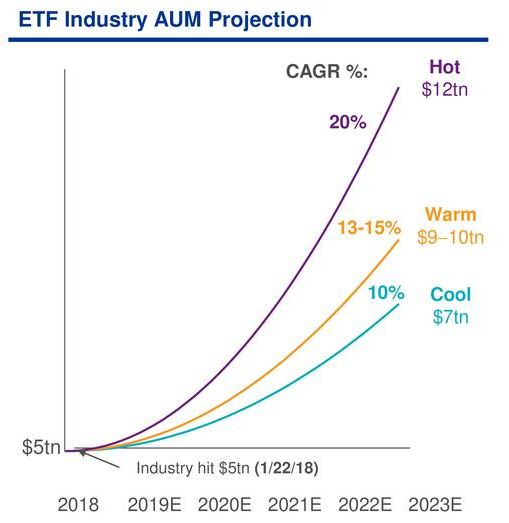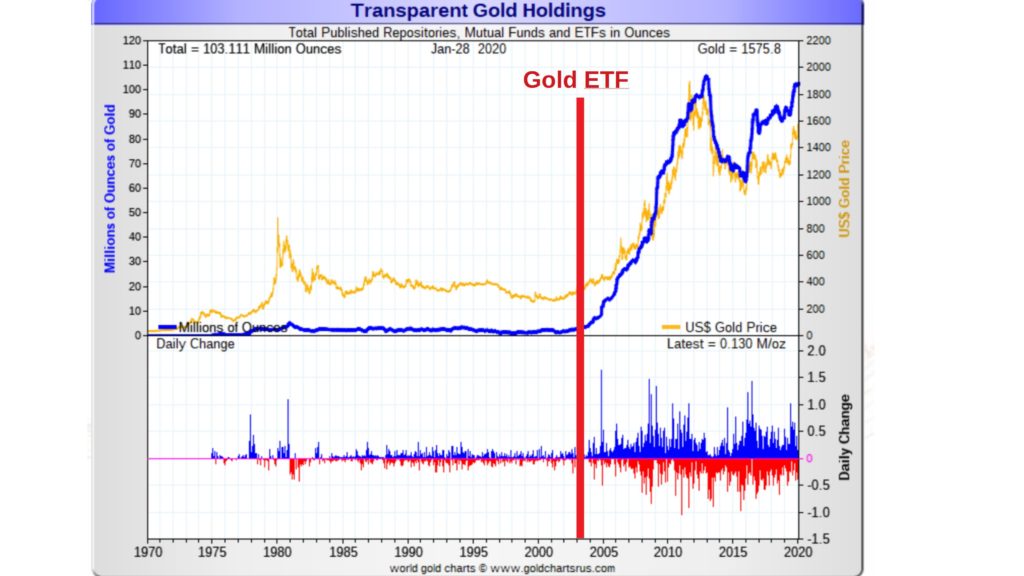Brookfield's Strategic Response To Market Volatility: Opportunistic Investments

Table of Contents
Brookfield Asset Management, a global leader in alternative asset investing, has consistently demonstrated a remarkable ability to navigate market volatility. Their strategy hinges on identifying and capitalizing on opportunistic investments, generating substantial returns even amidst economic uncertainty. This article explores Brookfield's strategic response to market fluctuations, highlighting their approach to opportunistic investment and the long-term value creation it fosters.
Brookfield's Long-Term Investment Horizon
Brookfield's success in navigating market downturns is significantly attributed to their long-term investment horizon and strategic approach to risk management. This long-term perspective allows them to weather short-term market storms and capitalize on opportunities that may not be apparent to investors with shorter time horizons.
Weathering Market Storms through Diversification
Brookfield's diversified portfolio is a cornerstone of its resilience. Instead of concentrating investments in a single sector, they strategically allocate capital across various asset classes, including real estate, infrastructure, renewable power, and private equity. This diversification mitigates risk by ensuring that underperformance in one sector is offset by the strength of others.
- Example: During the 2020 market downturn, while some real estate sectors experienced weakness, Brookfield's investments in renewable energy and essential infrastructure performed strongly, cushioning the overall portfolio impact.
- Example: Their private equity holdings provided a counterbalance to potential losses in other asset classes.
- This approach minimizes the impact of sector-specific downturns, ensuring a more stable and resilient portfolio over the long term. Brookfield's long-term perspective allows them to ride out short-term market fluctuations, focusing on the underlying value of their assets and their potential for long-term growth.
Focus on Essential Assets
A key component of Brookfield's strategy is a focus on essential assets—investments that provide stable cash flows regardless of the broader economic climate. These assets are typically less susceptible to economic cycles and continue to generate income even during periods of recession.
- Examples: Toll roads, utilities, essential real estate (such as logistics facilities and data centers), and renewable energy infrastructure all fall into this category.
- Characteristics: These assets often benefit from long-term contracts, inflation-protected pricing, and inelastic demand, making them attractive investments during times of uncertainty.
- This focus on stability and predictable cash flows significantly reduces vulnerability during periods of economic contraction, providing a solid foundation for long-term value creation.
Identifying and Capitalizing on Opportunistic Investments
Brookfield’s opportunistic investment strategy is another key driver of its success. Their ability to identify undervalued assets and capitalize on market dislocations has proven invaluable in generating superior returns.
Strategic Acquisitions during Market Downturns
When market volatility creates uncertainty and distress, Brookfield sees opportunities. They actively seek undervalued assets during periods of market stress, leveraging their strong financial position to acquire properties and businesses at discounted prices.
- Case Study: Brookfield's acquisitions of distressed real estate assets during the 2008 financial crisis exemplify this strategy. They purchased properties at significantly below market value, subsequently enhancing their value through operational improvements and repositioning.
- Due Diligence: Their rigorous due diligence process and sophisticated risk assessment strategies are crucial in identifying truly undervalued assets and mitigating potential risks.
Value Enhancement through Operational Expertise
Brookfield's expertise extends beyond simply acquiring assets. They actively enhance the value of their investments through operational improvements and strategic repositioning. This value-add approach is a key differentiator and a significant contributor to their returns.
- Value-Add Strategies: These strategies include renovations, lease renegotiations, operational efficiency improvements, and strategic development initiatives.
- Example: Improving the energy efficiency of a building, renegotiating favorable leases, or redeveloping a property to meet changing market demands can significantly enhance its value and profitability.
- These improvements directly translate to higher returns for Brookfield and its investors.
Maintaining Financial Strength and Flexibility
Brookfield's consistent success is also underpinned by its strong financial position and flexibility. This financial strength allows them to act decisively when opportunities arise, regardless of market conditions.
Conservative Financial Management
Brookfield maintains a conservative financial management approach, characterized by a strong balance sheet and low leverage. This prudent approach provides the financial flexibility to seize opportunities during market downturns without jeopardizing its financial stability.
- Financial Ratios: Their consistently strong financial ratios demonstrate their commitment to maintaining a robust financial foundation.
- Investor Confidence: This conservative approach builds confidence among investors, providing access to capital and enhancing their ability to compete for attractive investment opportunities.
Access to Diverse Funding Sources
Brookfield's access to diverse funding sources, including institutional investors, debt markets, and its own internal capital, further enhances its ability to respond quickly to market opportunities.
- Relationships: Their extensive network of relationships with institutional investors and lenders provides them with a variety of funding options.
- Speed of Execution: This diverse funding base enhances their flexibility and speed of execution, allowing them to act decisively when attractive investment opportunities emerge.
Conclusion
Brookfield's success in navigating market volatility is a testament to their strategic approach of opportunistic investments, long-term vision, and robust financial management. By focusing on essential assets, diversifying their portfolio, and actively seeking undervalued opportunities, Brookfield consistently delivers strong returns for its investors. Understanding Brookfield's strategy provides valuable insights for investors seeking to build resilient portfolios and benefit from opportunistic investments in the face of economic uncertainty. To learn more about Brookfield's investment strategies and how to participate in their opportunities, visit [link to Brookfield's website]. Consider exploring the potential of opportunistic investments within your own portfolio.

Featured Posts
-
 Canada Post Strike Looms Potential Service Disruptions Later This Month
May 08, 2025
Canada Post Strike Looms Potential Service Disruptions Later This Month
May 08, 2025 -
 Is A Half Point Interest Rate Cut The Right Move For The Bank Of England
May 08, 2025
Is A Half Point Interest Rate Cut The Right Move For The Bank Of England
May 08, 2025 -
 Twins Dominate Angels Hitters Strike Out 13 Times In Series Sweep
May 08, 2025
Twins Dominate Angels Hitters Strike Out 13 Times In Series Sweep
May 08, 2025 -
 Psg Vence Al Lyon En Su Propio Estadio
May 08, 2025
Psg Vence Al Lyon En Su Propio Estadio
May 08, 2025 -
 110 Growth Potential Why Billionaires Are Investing In This Black Rock Etf
May 08, 2025
110 Growth Potential Why Billionaires Are Investing In This Black Rock Etf
May 08, 2025
Latest Posts
-
 Trump Media And Crypto Coms Etf Partnership Sends Cro Price Higher
May 08, 2025
Trump Media And Crypto Coms Etf Partnership Sends Cro Price Higher
May 08, 2025 -
 Van Eck Predicts 185 Surge Top Cryptocurrency To Buy Now
May 08, 2025
Van Eck Predicts 185 Surge Top Cryptocurrency To Buy Now
May 08, 2025 -
 Trump Media And Crypto Com Partner For Etf Launch Cro Price Soars
May 08, 2025
Trump Media And Crypto Com Partner For Etf Launch Cro Price Soars
May 08, 2025 -
 Bitcoin Fiyati Son Dakika Guencellemeleri Ve Analizler
May 08, 2025
Bitcoin Fiyati Son Dakika Guencellemeleri Ve Analizler
May 08, 2025 -
 Understanding The Dogecoin Shiba Inu And Sui Price Increase
May 08, 2025
Understanding The Dogecoin Shiba Inu And Sui Price Increase
May 08, 2025
